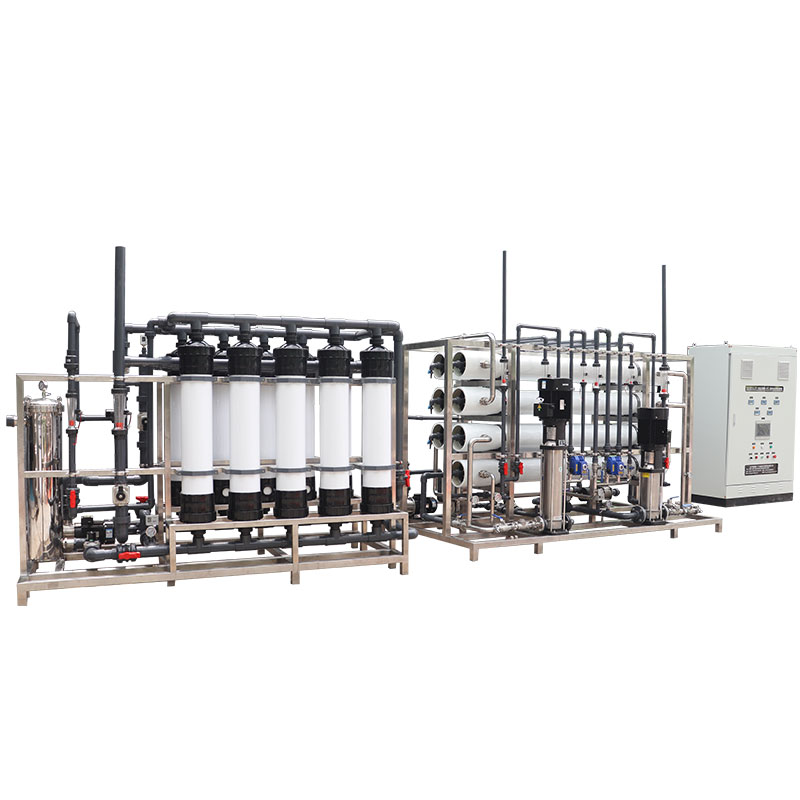What is the difference between a RO water purification system and conventional filtration?
Introduction: As people's concerns about water quality safety and health continue to increase, the demand for water purification systems is gradually rising. Among many water purification systems, reverse osmosis water purification systems have attracted much attention due to their efficient filtration technology. This article will explore the differences between filtration technology and conventional filtration in reverse osmosis water purification systems, and further discuss the advantages, disadvantages and applications of these two purification methods.
What is the difference between the filtration technology of RO water purification system and conventional filtration?
There are obvious technical differences between reverse osmosis water purification systems and conventional filtration.
1. Differences in filtration technology:
The reverse osmosis water purification system uses semi-permeable membrane technology to separate water molecules from impurities through high pressure to achieve purification purposes. This technology can effectively remove most dissolved salts, bacteria, viruses and other harmful substances.
Conventional filtration uses filter media, such as physical materials such as sand, carbon or paper, to remove suspended particles, impurities and sediments from the water. It has a better filtering effect on large particulate matter, but its ability to remove dissolved substances is weak.
2. Differences in filtering effects:
Reverse osmosis water purification systems provide more thorough filtration and can remove a wide range of dissolved chemicals, such as fluoride, lead, and arsenic. It also removes bacteria and viruses, providing high-quality drinking water.
Conventional filtration systems primarily remove larger particles and impurities and cannot completely remove chemical contaminants or microorganisms.
3. Maintenance and usage costs:
The equipment and maintenance costs of a reverse osmosis water purification system are relatively high and require regular replacement of membranes and other components, but the purification results it provides are worth the investment.
Conventional filtration has lower equipment and maintenance costs, but its filtration effect is limited and may not be ideal for users with higher water quality requirements.

What are the advantages and disadvantages of reverse osmosis water purification systems versus conventional filtration?
Both water purification systems have their own advantages and disadvantages and are suitable for different needs and application scenarios.
1. Advantages and disadvantages of reverse osmosis water purification system:
Advantages: The reverse osmosis system can provide high-quality purified water, remove a variety of harmful substances, and ensure the safety and health of water quality. It is suitable for places such as homes, hospitals and laboratories that require high quality drinking water.
Disadvantages: The installation and maintenance costs of the system are high, and the initial investment is large. In addition, since the reverse osmosis system will produce a certain amount of wastewater, the efficiency of water resource utilization needs to be further optimized.
2. Advantages and disadvantages of conventional filtration:
Advantages: Conventional filtration equipment is relatively cheap, simple to maintain, and suitable for users with limited budgets. It has a better removal effect on large particulate matter and is suitable for primary purification in ordinary households and industries.
Disadvantages: Conventional filtration has limited ability to remove chemical contaminants and microorganisms and may not provide high-quality drinking water.

What application scenarios are suitable for reverse osmosis water purification systems and conventional filtration?
Depending on different needs and application scenarios, the two water purification systems can each exert their own advantages.
1. Application scenarios of reverse osmosis water purification system:
Household drinking water purification: Reverse osmosis systems can provide high-quality drinking water and ensure the health and safety of household water.
Medical and laboratory applications: Reverse osmosis systems can provide high-purity water to meet the special needs of medical and laboratory applications.
Industrial production: Some industrial processes that require a high-quality water source, such as semiconductor manufacturing and pharmaceutical production, can use reverse osmosis systems to provide purified water.
2. Application scenarios of conventional filtering:
Primary purification of household water: Conventional filtration is suitable for removing suspended particles and impurities in tap water and improving water quality.
Industrial wastewater treatment: Conventional filtration can be used to remove suspended solids from industrial wastewater and protect downstream water bodies and the environment.
Agricultural irrigation: Conventional filtration can purify water sources, remove impurities, and protect the healthy growth of crops.

Reverse osmosis water purification systems and conventional filtration each have their own unique technologies and application scenarios. Reverse osmosis systems are suitable for places with high water quality requirements, such as homes, medical and industrial production areas. Conventional filtration is suitable for primary purification and industrial wastewater treatment. Choosing the right water purification system based on specific needs will help ensure water safety and improve water quality.






